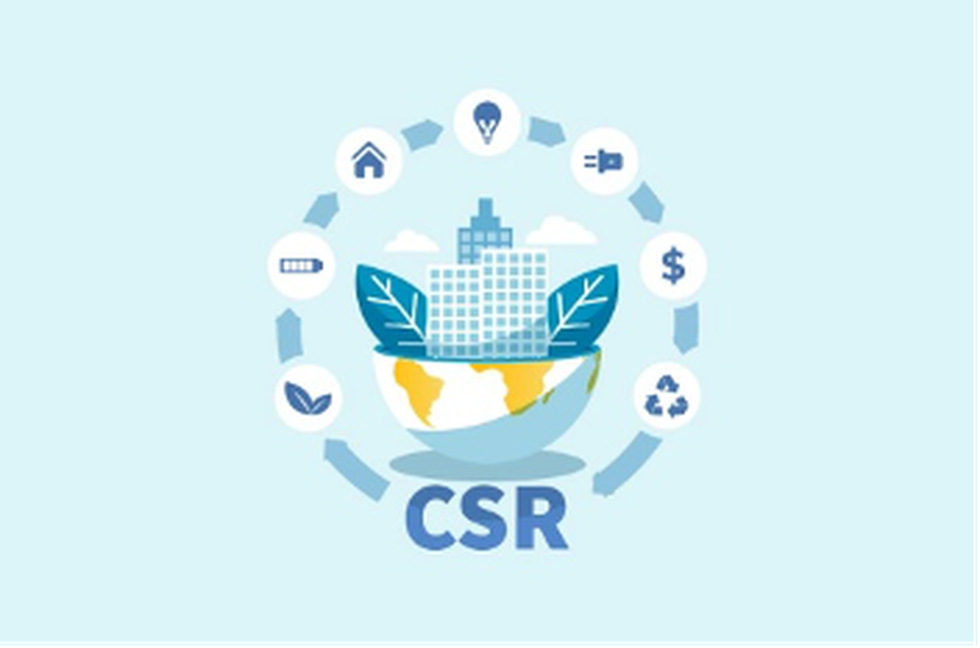
About Corporate Social Responsibility:
- What it is? It is a business model by which companies make a concerted effort to operate in ways that enhance rather than degrade society and the environment.
- It helps both improve various aspects of society as well as promote a positive brand image of companies.
- Section 135 of the Companies Act, 2013 makes it mandatory for the following companies having in the immediately preceding financial year:
- Every company having a net worth of rupees five hundred crores or more, or
- Every company having a turnover of rupees one thousand crores or more, or
- Every company has a net profit of rupees five crores or more to comply with CSR provisions.
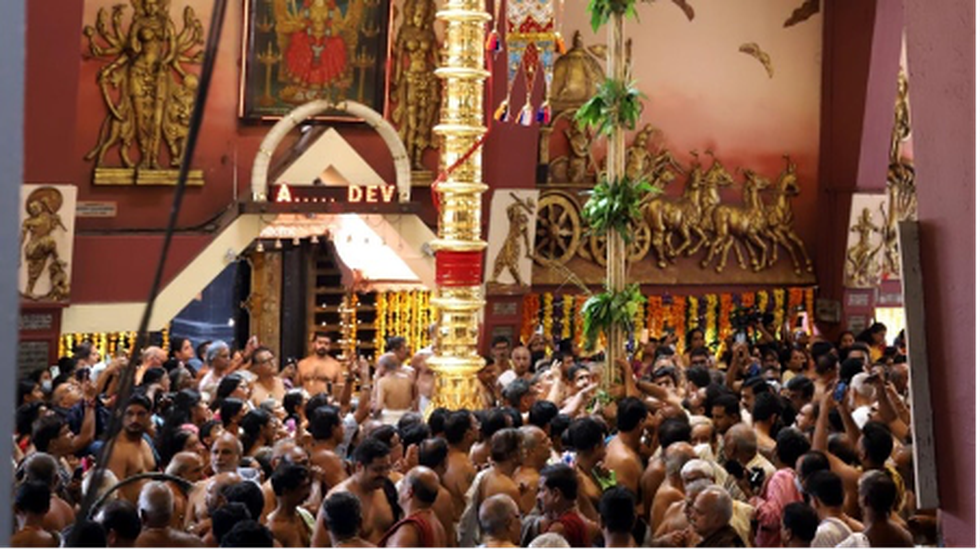
About Thrissur Pooram:
- It is celebrated in Kerala during the Malayalam month of Medom(April-May).
- It is considered to be the Mother of all Poorams, a cultural highlight that towers above all other festivals.
- It is celebrated in the grand assembly of Gods and Goddesses in and around Thrissur.
- It was the brainchild of Raja Rama Varma, famously known as Sakthan Thampuran, the Maharaja of Cochin (1790–1805).
- It is centred on the Vadakkunnathan Temple, with all these temples sending their processions to pay obeisance to Shiva, the presiding deity.
- The processions and rituals of each of deities follow a very strict itinerary, scheduled in such a way that the tempo of the Pooram celebrations - 36 hrs non-stop - is maintained without any loss of energy.
- A massive parade is planned on temple grounds, accompanied by Chenda Melam and Pancha Vadyam music.
- The final day of the pooram occurs on the seventh day. It is often referred to as "Pakal Pooram.
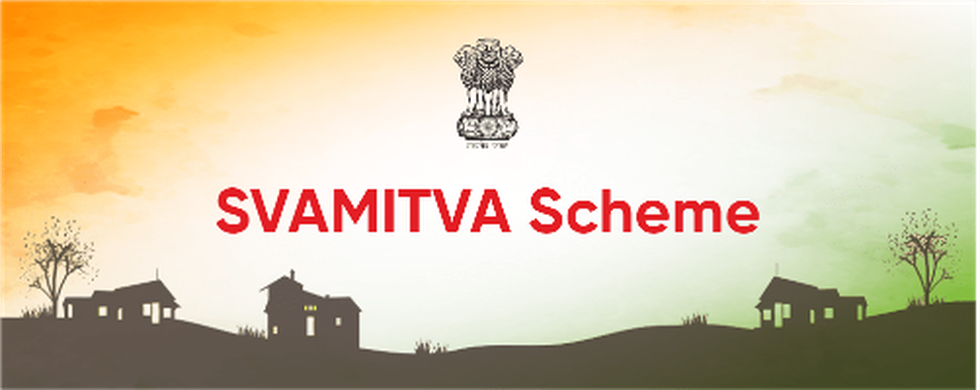
About Svamitva scheme:
- A survey of villages and mapping with improvised technology in village areas (SVAMITVA) is a Central Sector Scheme.
- It was launched in 2021 after the successful completion of the pilot phase of the scheme (2020-2021) in 9 states.
- It seeks to give ownership of property in rural inhabited areas, by mapping land parcels using drone technology and providing a ‘Record of Rights’ to village household owners with the issuance of legal ownership cards (Property cards/Title deeds) to the property owners.
- Implementation: It is implemented with the collaborative efforts of the Ministry of Panchayati Raj, State Revenue Department, State Panchayati Raj Department and Survey of India.
- Full coverage of nearly 6.62 lakh villages in India and establishment of an extensive CORS network with 567 CORS stations.
What is the CORS network?
- A Continuously Operating Reference Stations (CORS) network provides regional positioning service.
- In CORS Infrastructure, the corrections to the map are instantly sent to the rover receiver from the control centre which helps to find the very accurate positioning of the rover in real me.
- It plays a major role in achieving centimetre accuracy positioning in many applications, for example, cadastral mapping, land information management, large-scale mapping etc.
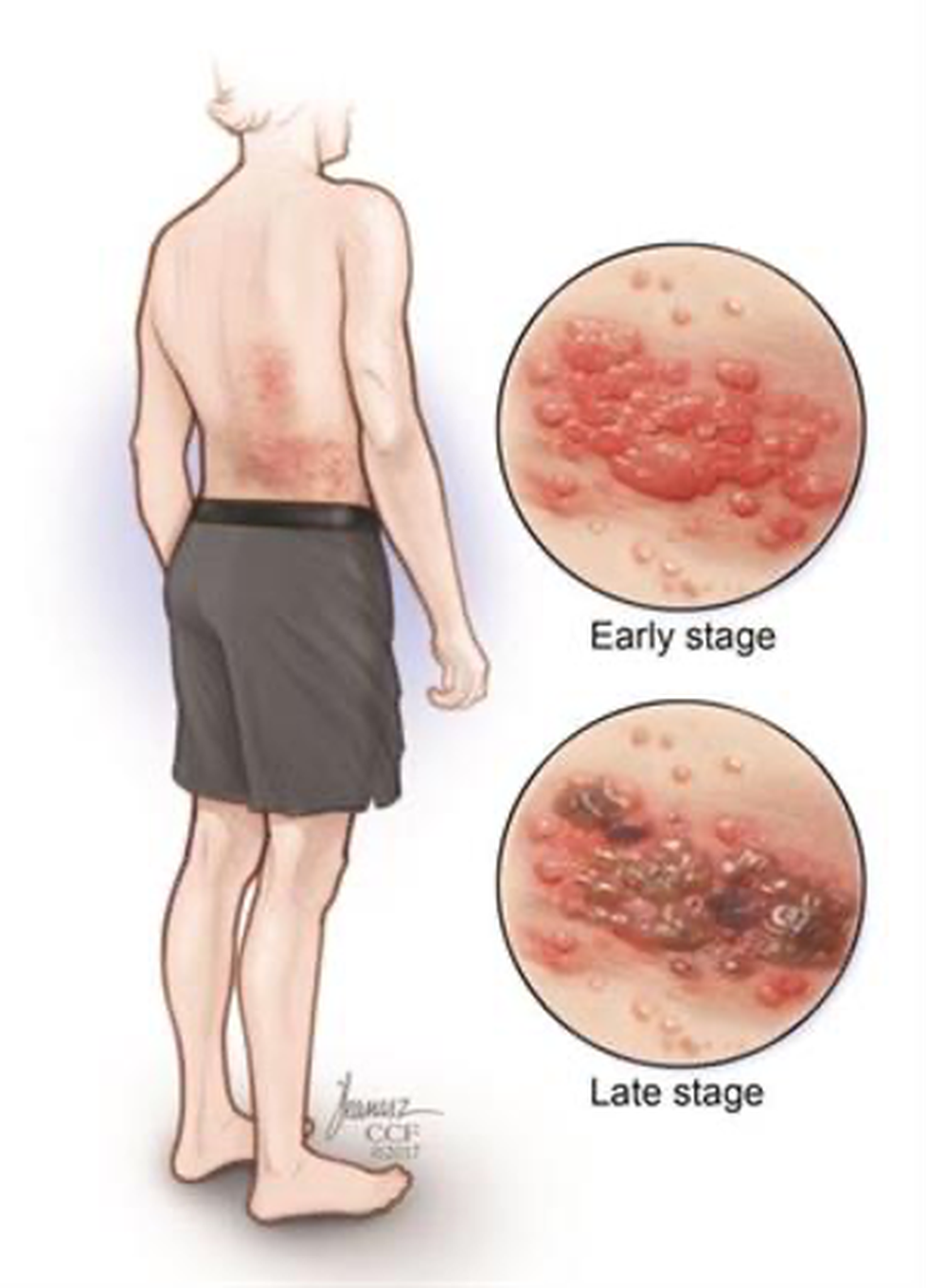
About Shingles disease:
- It is caused by the varicella-zoster virus the same virus that causes chickenpox.
- It can occur anywhere in the human body.
- It typically looks like a single stripe of blisters that wraps around the left side or the right side of your torso.
- It is not contagious means it can’t be spread from one person to another.
- The risk of shingles goes up as you get older and it is most common in people over age 50.
- Symptoms: Pain, burning, tingling sensitivity to touch etc.
- There is a vaccine called Shingrix available which helps in preventing shingles and its complications.
What other problems can shingles cause?
- Postherpetic neuralgia (PHN) is the most common complication of shingles. It causes severe pain in the areas where you had the shingles rash.
- Vision loss: It can happen if shingles affect the eyes. It may be temporary or permanent.
- Hearing or balance problems are possible if you have shingles within or near your ear. You may also have weakness in the muscles on that side of your face. These problems can be temporary or permanent.
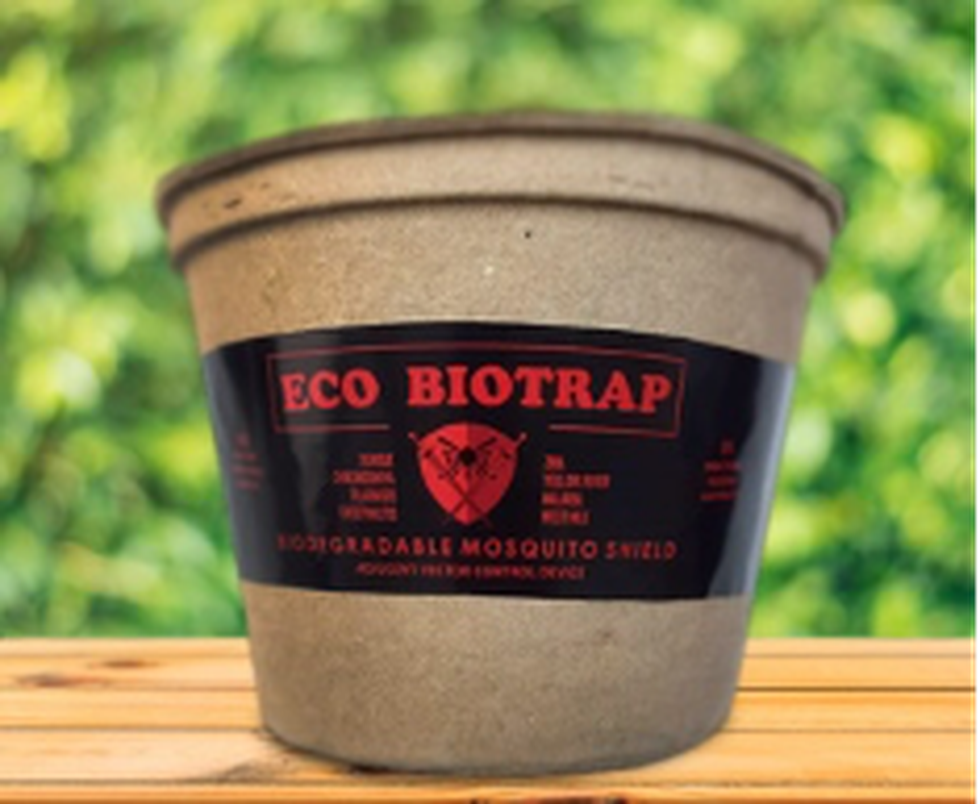
About Eco Biotraps:
- What it is? Eco Biotraps is pegged as an eco-friendly trap with ‘attractants’ that attract female mosquitoes and lay eggs in its water.
- Eco Biotraps are made from recycled cardboard.
- It consists of a small bag containing a mixture of attractant and insecticide.
- These traps are filled with water and placed in mosquito-infested areas.
- The attractant and insecticide (Insect Growth Regulator granules) in the trap bag are immediately mixed with water. After which, the attractant in the water attracts the female mosquito to lay her eggs there.
- The insecticide present in the water destroys the mosquito eggs.
What are Vector-borne diseases?
- These are human illnesses caused by parasites, viruses and bacteria that are transmitted by vectors.
- The burden of these diseases is highest in tropical and subtropical areas, and they disproportionately affect the poorest populations.
- Every year there are more than 700,000 deaths from diseases such as malaria, dengue, schistosomiasis, human African trypanosomiasis, leishmaniasis, Chagas disease, yellow fever, Japanese encephalitis and onchocerciasis.

About Osteoarthritis:
- It is a degenerative joint disease that can affect the many tissues of the joint.
- It is the most common type of arthritis. Arthritis refers to biomechanical changes within a joint.
- Osteoarthritis occurs when the protective cartilage that cushions the ends of the bones wears down over time.
- Although osteoarthritis can damage any joint, the disorder most commonly affects joints in your hands, knees, hips and spine.
- It is more likely to develop as people age. But it can affect much younger people, too, especially those who have had a prior joint injury
- Symptoms:
- Symptoms often develop slowly and worsen over time.
- It includes Pain, Stiffness, Tenderness, Loss of flexibility, Grating sensation, Bone spurs and
- Treatment:
- There is no cure for Osteoarthritis, but medication, assistive devices and other therapies that don’t involve drugs can help to ease the pain.
- As a last resort, a damaged joint may be surgically fused or replaced with one made of a combination of metal, plastic and/or ceramic.

About White Spot Disease:
- What is it? It is a highly contagious viral infection that affects crustaceans such as prawns, yabbies and crabs.
- When found in high-intensity production areas, such as prawn farms, white spot disease results in the rapid mortality of prawns.
- It has the potential to cause a significant financial impact on the farmed prawn industry.
- Causative Agent:
- White spot syndrome virus, a large DNA virus assigned as the only member of the genus Whispovirus (family Nimaviridae).
- The virus is known to occur in fresh, brackish and marine water.
- All life stages are potentially susceptible, from eggs to broodstock.
- The virus does not pose a risk to food safety or human health.
- When infected with White Spot Disease, the prawns may,
- have loose shells;
- show numerous white spots (0.5–2.0mm in diameter) on the inside surface of the shell;
- be discoloured pink-to-red;
- have unusual mortality;
- come to the edge or water surface;
- demonstrate unusual swimming patterns;
- How it is spread:
- It is primarily spread through the movement of infected animals or contaminated water.
- Birds that feed on and move infected animals can spread the disease.
- Marine worms have been implicated as potential carriers of the disease.
- Control:
- Not moving crustaceans out of the white spot disease-restricted area.
- Destruction, disposal and decontamination procedures for infected prawn premises.
8. What is Unique Land Parcel Identification Number (ULPIN)?
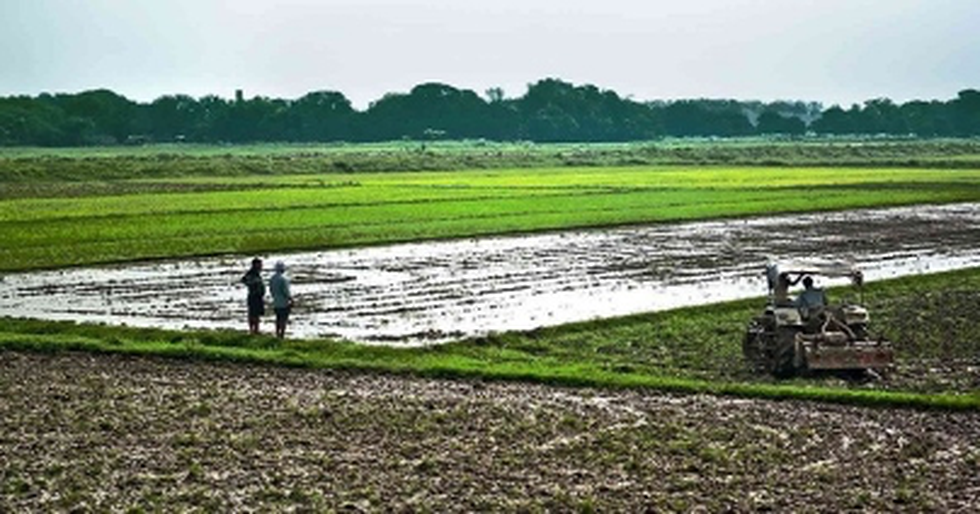
About Unique Land Parcel Identification Number (ULPIN):
- It is part of the Digital India Land Records Modernization Programme (DILRMP).
- ULPIN or Bhu-Aadhar is a 14-digit identification number accorded to a land parcel.
- It would uniquely identify every surveyed parcel of land and prevent land fraud, especially in rural India, where land records are outdated and disputed.
- The identification is based on the longitude and latitude coordinates of the land parcel and depends on detailed surveys and geo-referenced cadastral maps.
- It aims to compile every detail pertaining to different properties from across the country.
- ULPIN is a Single, Authoritative Source of Truth for information on any parcel of land or property to provide Integrated Land Services to the citizens as well as all stakeholders.
- Various types of data relating to the landed properties, which are currently under the possession of different ministries and departments, too will be linked with the ULPIN.
Digital India Land Records Modernization Programme (DILRMP):
- It is a central sector scheme being implemented by the Department of Land Resources under the Ministry of Rural Development.
- Aim: It attempts to build upon the commonalities that exist in the arena of land records in various States to develop an appropriate Integrated Land Information Management System (ILIMS) across the country.
- The ILIMS integrates all the processes and lands records databases with the banks, financial institutions, circle rates, Registration Offices and other sectors.
- Major components: Computerization of land records, Survey/re-survey, Computerization of Registration.

About Operation Kaveri:
- It is a rescue operation being carried out by the Indian Government to bring back Indian citizens stranded in Sudan.
- According to the official data, the number of Indians in Sudan is around 4,000.
- As part of the operation, two C-130 aircraft and the navy ship INS Sumedha is on standby to safely evacuate stranded Indians.
- Why the need for evacuation? Sudan has been witnessing deadly fighting between the country's army and a paramilitary group, the paramilitary Rapid Support Forces (RSF) that has reportedly left several hundred’s dead.
- Cause of fighting? It was triggered by disagreement over an internationally backed plan to form a new civilian government four years after the fall of autocrat Omar al-Bashir and two years after the military coup. Both sides accuse the other of thwarting the transition.
Key facts about Sudan:
- It is located in northeastern Africa.
- It is bounded on the north by Egypt, on the east by the Red Sea, Eritrea, and Ethiopia, on the south by South Sudan, on the west by the Central African Republic and Chad, and on the northwest by Libya.
- Capital: Khartoum
- Sudan is mainly composed of vast plains and plateaus that are drained by the Nile River and its tributaries.
- The country is dominated by Muslims, most of whom speak Arabic and identify themselves as “Arabs.
- Arabic is the primary language of much of the population and is the most common medium for the conduct of government, commerce, and urban life throughout the country.


.jpg)
.jpg)
.jpg)
























































































































































.png)
.png)
.png)
.png)
.png)


.png)
.png)
.png)





.png)
.png)






.png)
.png)
.png)
.png)
.png)
.png)
.png)
.png)
.png)

.png)







.png)
.png)


.png)
.png)
.png)


.png)

.png)
.png)





.jpg)

.png)
.png)


.png)

.png)
.png)
.png)

.jpg)

.jpg)


.png)

.png)
.png)
.png)
.png)
.png)
.png)
.png)
.png)
.png)
.png)




.png)

.png)





.png)
.png)
.png)
.png)
.png)
.png)
.png)
.png)
.png)
.png)
.jpg)
.jpg)

.png)
.png)
.png)
.png)
.png)
.png)
.png)
.png)
.png)
.png)
.png)
.png)
.png)
.png)
.png)
.png)
.png)
.png)
.png)
.png)
.png)
.png)



.png)
.png)

.jpg)
.jpg)


.jpg)
.jpg)
.jpg)
.jpg)
.jpg)

.jpg)








.jpg)
.jpg)

















.jpg)
.jpg)







.jpg)


















.jpg)
.jpg)






























































































.jpg)
.jpg)


























.jpg)

.jpg)










.jpg)








.jpg)




.jpg)










.jpg)


















.jpg)












































.jpg)














.jpg)
.jpg)
.jpg)





.jpg)

.jpg)
.jpg)





































































.jpg)


































.jpg)
.jpg)
















































.jpg)












.jpg)


.jpg)




.jpg)
.jpg)
.jpg)

.jpg)
.jpg)
.jpg)
.jpg)

.jpg)
.jpg)
.jpg)

.jpg)
.jpg)
.jpg)
.jpg)
.jpg)
.jpg)
.jpg)
.jpg)

.jpg)


.jpg)
.jpg)
.jpg)
.jpg)
.jpg)
.jpg)
.jpg)
.jpg)
.jpg)
.jpg)











.jpg)
.jpg)





.jpg)
.jpg)
.jpg)
























.jpg)
























.jpg)









.jpg)
.jpg)







.jpg)
.jpg)









































.jpg)
.jpg)
.jpg)
.jpg)
.jpg)

.jpg)
.jpg)
.jpg)
.jpg)
.jpg)


.jpg)
.jpg)
.jpg)
.jpg)
.jpg)

.jpg)
.jpg)
.jpg)
.jpg)
.jpg)
.jpg)
.jpg)
.jpg)
.jpg)
.jpg)
.png)

.png)
.png)

.png)
.png)
.png)
.png)


.jpg)
.jpg)

.jpg)
.jpg)
.jpg)

.png)
.png)
.png)
.png)
.png)
.png)
.png)

.png)
.png)
.png)
.png)
.png)
.png)
.png)
.png)
.png)
.png)





































































-min.png)



.png)




.png)








































